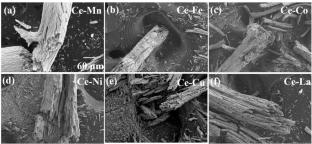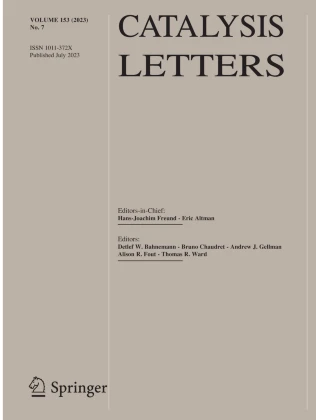Synergic Effects Between Doped Transitional Metals and CeO2Catalysts with 3D Multi-tubular Interconnected Structure Towards Efficient Soot Oxidation
Abstract
The effective catalyst-soot contact remains a formidable challenge that hinders the full exploitation of their intrinsic activities towards soot oxidation, while the role of catalysts with varying morphologies on the transfer path of active species rembioains a subject of debate. Thus, we fabricated a series of transition metal-doped CeO2 catalysts with a three-dimensional (3D) multi-tubular interconnected structure using loofah sponge as a bio-template for soot oxidation in the present work. All the catalysts exhibit superior catalytic activity and stability, among which Ce-Mn catalyst possesses the highest specific surface area (68.90 m²/g) and the largest number of oxygen-active species due to the synergistic redox effects between CeOx and MnOx, demonstrates the lowest T50 value of 358 °C under tight contact mode. A comparative study was conducted on the catalytic activity of CeO2 catalysts doped with different transition metal ions under loose contact and close contact conditions. It was observed that the Ce-Cu catalyst exhibited the smallest differential value (ΔT50 = 26 °C) and a remarkably high relative contact degree (DRC = 0.93).It is evident that the Ce-Cu samples exhibit the highest transfer efficiency of oxygen-active species, owing to their 3D multi-tubular interconnected framework, which significantly enhances the contact degree between the catalyst and soot particles. This research offers a comprehensive understanding of the evolution process of active oxygen species, providing guidance for the precise design of efficient CeO2 catalysts with specific morphology tailored for soot combustion.
Graphical Abstract


 求助内容:
求助内容: 应助结果提醒方式:
应助结果提醒方式:


